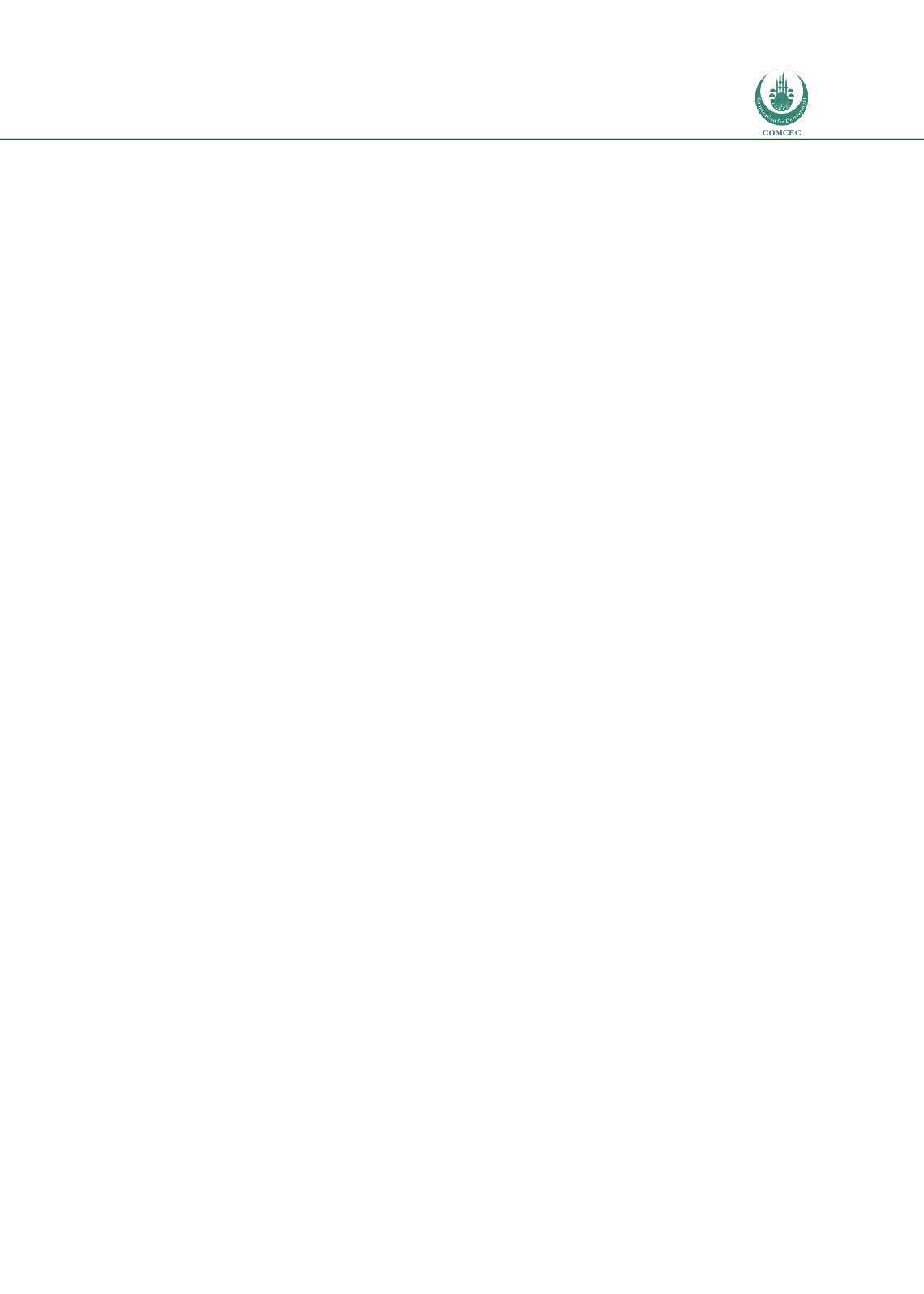

Reducing Postharvest Losses
In the OIC Member Countries
113
While these figures need to be treated with some caution due the potential for error and
double counting of losses along the chain (and under-valuation of social or external benefits),
the results are rather stark.
4.5.3.
Causes of Postharvest Losses
According to economic orthodoxy, market distortions caused by subsidy lead sub-optimal
resource allocation, and therefore represent a potential postharvest loss. Oman has controlled
and fixed consumer prices for meat since 2008 and this has made farming less profitable and
caused losses (and company failures) in the animal feed sector. The scale of this loss and who
incurs it in the livestock sector are currently unknown.
Figureshows example of the meat
sector taken in Oman during the field visit.
High proportion of all animals slaughtered within the household (estimates are 85-90%). This
leads to waste (of offal and skins for example), environmental cost, and health hazards.
Oman has no marketing standards for animal sales – price and quality are agreed by
negotiation. Animals are not weighed. Domestically produced animals are under-supplied to
the market, so this is a sellers’ market and quality is not always the most important issue for
the consumer. The absence of standards and the means to judge animal weight at the point of
sale means that trade is a factor of the negotiating skills of each actor. It is a matter of
speculation that consumers are likely to be least empowered under these market conditions as
they are conducting fewer transactions that in-chain actors such as traders.
Halal production has some challenges at scale. It is hard to say whether this is a loss (e.g.,
through the additional labour cost and relative inefficiency of large scale processing) or not.
Imported animals (goats, sheep and bulls) go through a complex chain, and have to be moved
from one form of transport to another up to seven times with subsequent losses (mortality)
through stress.
In most slaughterhouses, by-products are underutilised. Skins and hides are exported salted,
for example. The loss of value to the economy could be substantial.
There is for all practical purposes, no farmer, agent or manufacturer coordination in the Oman
livestock sector.
Under-feeding. Due to the climatic conditions, Oman has insufficient pasture to feed its
livestock population and has to import fodder and feed. Feed is expensive, and its use not
particularly well understood or valued. Attaining minimum conformity for marketing is the
primary aim of the majority of farmers. For this reason, a high proportion of animals are under
prepared at time of sale. The absence of a sale by weight systems or quality standards means
that this is not penalised.
Low off-take rates. It is also common to find animals being fed maintenance ration long after
they have reached optimum weight, thus wasting feed resources. The sub-optimality of the
production system causes losses of both types. Under-feeding losses tend to be incurred down
the chain in terms of the efficient conversion of animals to meat. Low off-take losses are the
revers, being incurred by farmers or fattening businesses and gained by meat processors as a
premium.
















